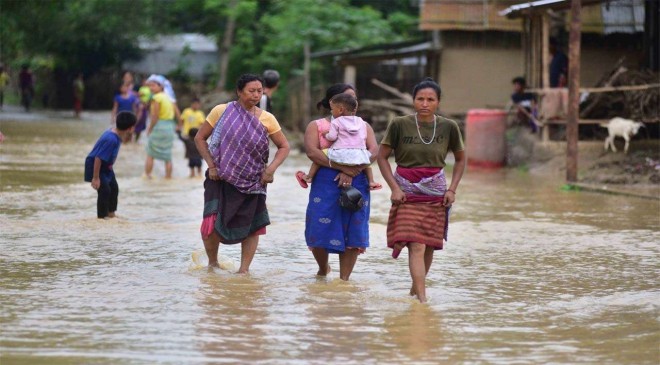Ahead of Cyclone Hidaya, schools’ reopening for the second term has been postponed indefinitely
Weeks of relentless downpours have triggered devastating floods across Kenya. Since March, heavy rains have wreaked havoc, particularly in the Rift Valley, central, and eastern regions.
The flooding has displaced hundreds of thousands of Kenyans, submerging homes, farms, and critical infrastructure. Roads are impassable, hindering access to essential services and raising concerns about food shortages.
The disaster has claimed more than 200 lives, with the death toll expected to rise as search and rescue efforts continue and thousands have been displaced with nearly 2,000 schools being destroyed.
After such devastating rain, Cyclone Hidaya was expected to hit Kenya and neighboring Tanzania on Friday, further worsening the flooding.
Read More: Pakistan Imposes Restrictions On Movement Of Chinese Nationals Without Armoured Vehicles
Here’s all you need to know:
The flooding in Kenya has brought about widespread devastation, resulting in loss of life and extensive damage. According to the most recent update from Kenya’s Ministry of Interior:
– The death toll has reached at least 210, with 20 fatalities reported within the last 24 hours. Additionally, 125 individuals have sustained injuries.
– Ninety people have been declared missing, with fears that many may be trapped beneath debris.
– Approximately 3,100 households have been forced to evacuate.
– The number of schools destroyed stands at 1,967.
“There are many people who cannot be found. Many of my neighbours cannot be found,” said Jane Wambui, a flood survivor, reported Al Jazeera.
Read More: Dubai gears up for heavy rainfall, airports and government issue travel advisories; check details
What has caused the flooding in Kenya?
Although climate phenomena like El Niño, characterized by Pacific Ocean surface water warming and ensuing heavy rainfall in certain regions, are associated with torrential rains, many Kenyans attribute the worsening flooding to governmental neglect.
In Mathare, residents point to the problem of poorly maintained and frequently obstructed drainage systems as the primary cause of the flooding.
Human Rights Watch released a report on Thursday detailing how the flooding severely affected low-income areas like Mathare due to “less sturdy constructions, overcrowding, and inadequate sanitation infrastructure” as contributing factors.
Greenpeace Africa’s Executive Director, Oulie Keita, said in a statement that the floods are a “stark reminder of the human cost of the climate crisis”. “Some of the damage was further worsened by misinformed development” she added.
Kenyan Government’s response
Kenyan President Ruto’s government has ordered mandatory evacuations for residents near 178 dams and reservoirs in 33 counties ahead of Cyclone Hidaya. Schools’ reopening for the second term has been postponed indefinitely, with many schools serving as shelters for flood-displaced individuals.
Ruto’s flood management has faced criticism, particularly from Mai Mahiu residents and those in affected informal settlements. Human Rights Watch criticized the government’s inaction despite warnings about enhanced rainfall since May last year. While funds were allocated for flood preparation, a detailed action plan needed to be included.
Contrary to predictions, El Niño rainfall has persisted, with the Meteorological Department expecting it to continue until June.





































